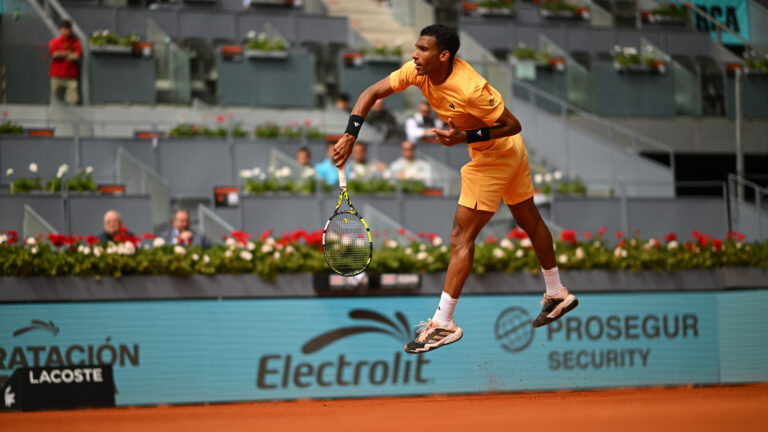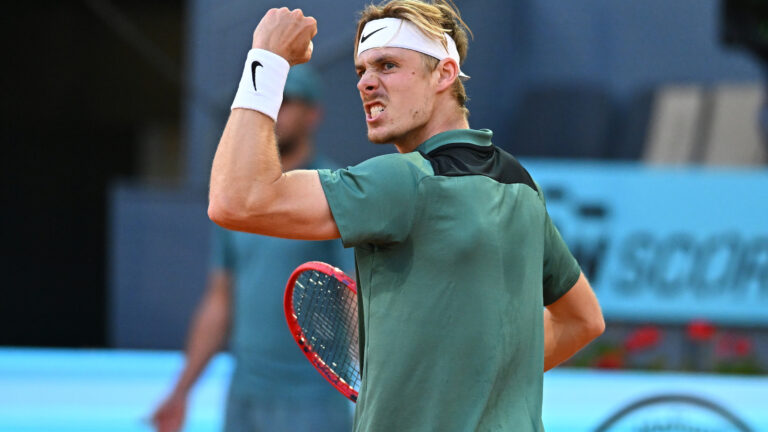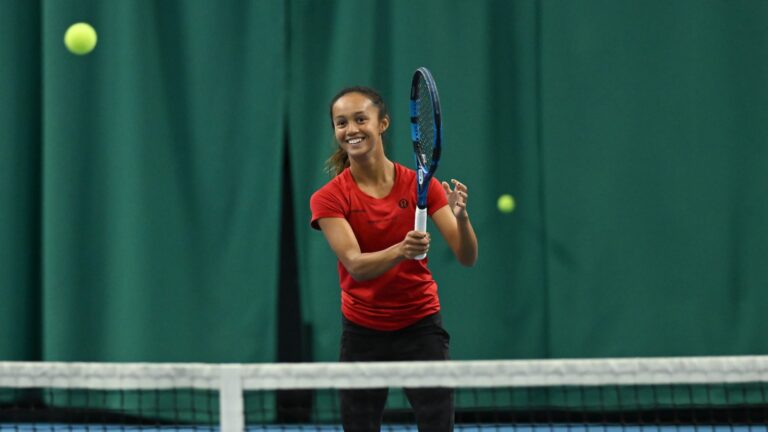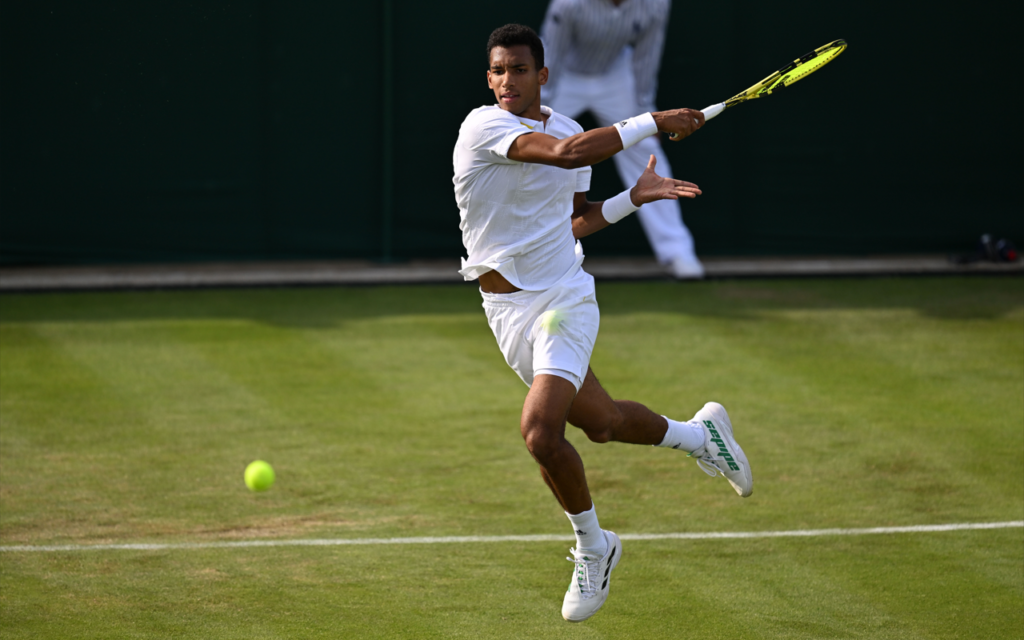
This picture is of Félix Auger-Aliassime, even though he lost his Wimbledon opening-round match 6-7(5), 6-4, 7-6(9), 7-6(5) to Maxime Cressy of the U.S. on Tuesday.
Auger-Aliassime is widely admired in tennis as one of the sport’s finest players, athletes and all-around good guys. He’s also a player who takes unfailingly good action pictures. Since he’s no longer in the tournament, and this is the last opportunity to feature him, it seemed appropriate to feature him at the top here.
The match with Cressy, a 6-foot-6 serve-and-volleyer was always going to be a challenge for any player in the draw. The 25-year-old American was coming in off a final at the ATP 250 event in Eastbourne last week and his outlier big serve and accurate volley game is not easy to deal with because it’s unique, and because he plays it so well. There’s also a daredevil aspect to it – especially the way he hits second serves in the 120 mph-plus range.
One of those led to a critical point in the match when he belted one 126 mph, which Auger-Aliassime couldn’t handle, to go ahead 10-9 in the pivotal third-set tiebreak. Auger-Aliassime double-faulted on the following point and that marked a major momentum shift in the match.
There had already been a pair of set points for each player in the tiebreak and Cressy cashing in on the third one was a game-changer.
About the Cressy game style of going for broke on the second serve, Auger-Aliassime said, “I’d watched him play last week and I knew that’s what he did. I tried to vary my position on first serves and second serves – whether to give me more time or to cut off the angles. Sometimes it worked and I made good returns. But it didn’t surprise me – I knew it would be like that. What impressed me is that he had so few (nine) double faults and, especially in the important moments when there’s tension, he served just as hard, and sometimes right on the line. He took risks and almost every time they worked.”
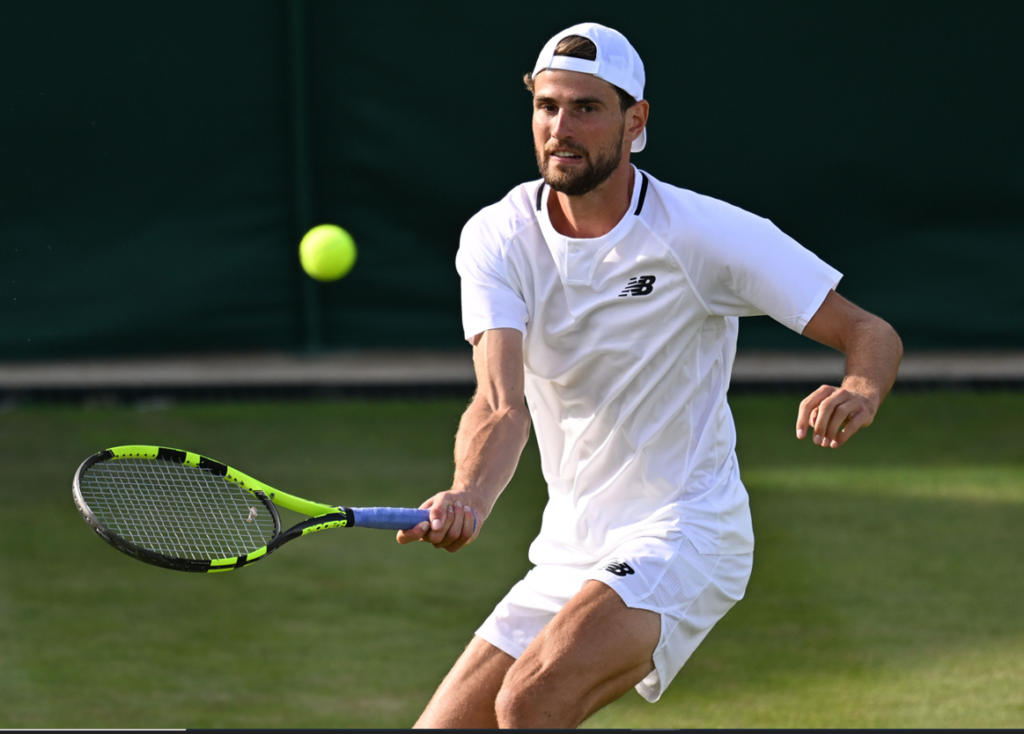
Cressy served-and-volleyed 120 times during the match, winning 88 of those, including the final one that ended the four-hour and 10-minute match on Court 3.
Auger-Aliassime had predicted before the match that it would probably come down to just a few points, and fatefully he was right. “I’ve had matches this year that have turned on just a few points and things went my way and after that, I’d continue in the tournament and everyone forgets,” he said. “I made the quarter-finals of the Australian Open but I was close to losing by a just few points in the second round [a 7-6(4), 6-7(4), 7-6(5), 7-6(4) win over Alejandro Davidovich Fokina]. Today I just lost by a few points. I think that someday I’ve got to not live on a tightrope – I’ve got to find a way to win more easily against guys who require a very good level like him (Cressy).”
Momentarily rising above his disappointment, he added with a touch of humour about Cressy, “I hope that next year he’ll be a seed and I won’t have to play him in the first round.”
Auger-Aliassime said about the rangy American’s serve, “I knew it was coming, but the quality of the serve was impressive. I have to say I’ve played the likes of John Isner, Milos (Raonic), (Reilly) Opelka – he’s with those guys.”
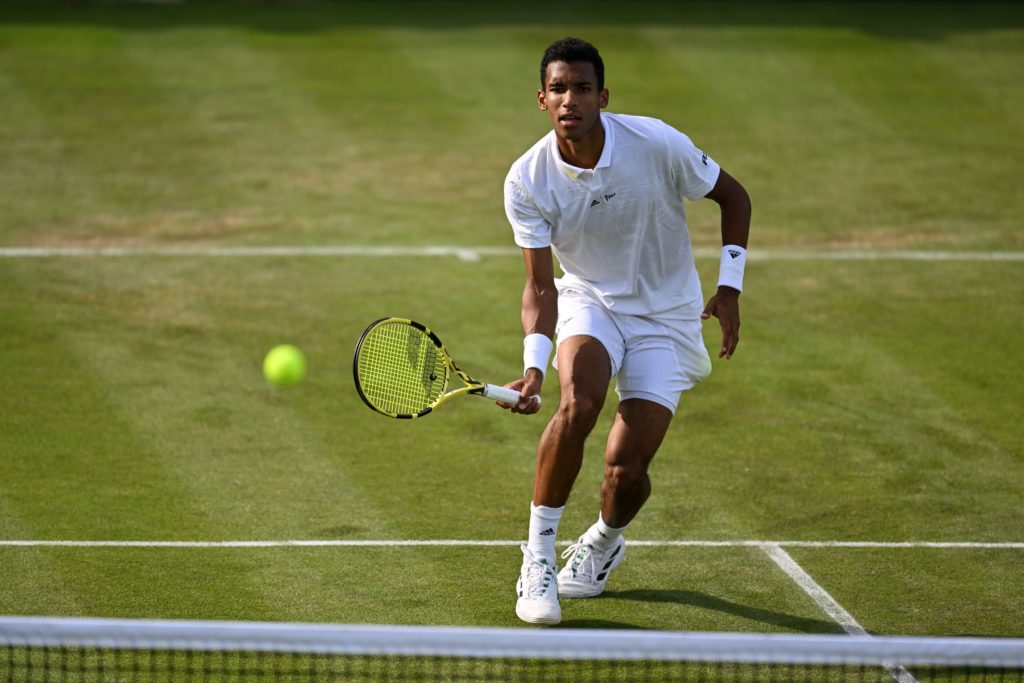
Auger-Aliassime isn’t leaving grass-court tennis, he’ll play the ATP 250 event in Newport, Rhode Island, beginning the week of July 11, and then plans to change to hard courts for the week of August 1 at the Los Cabos, Mexico, ATP 250 event that leads into the National Bank Open presented by Rogers in Montreal a week later.
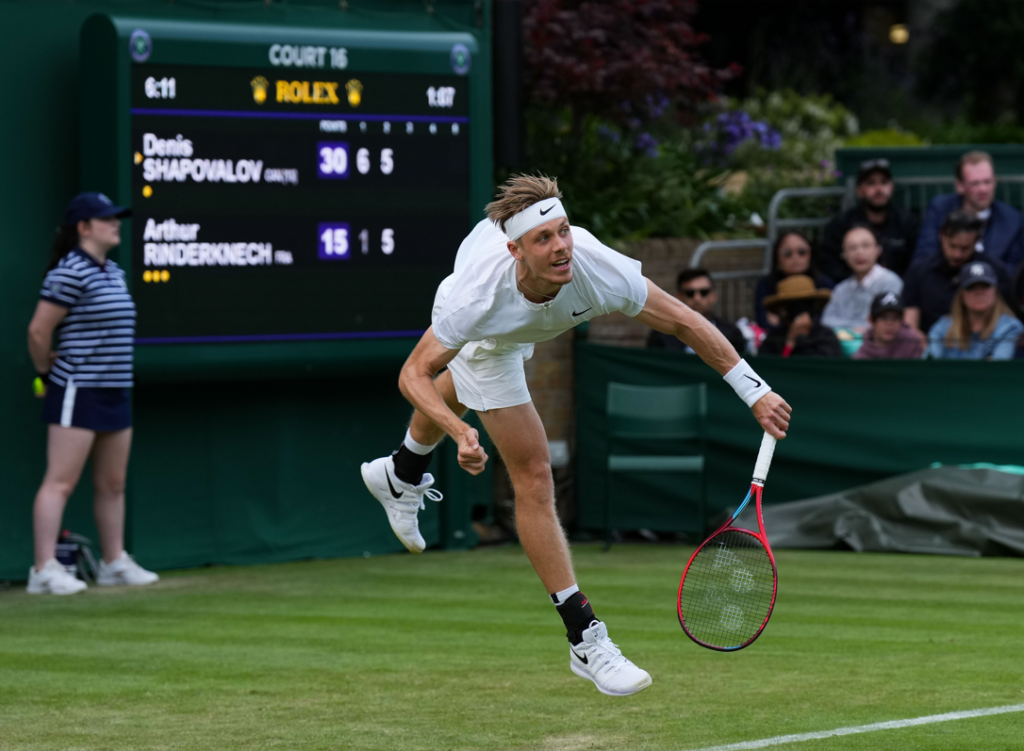
Back in the friendly confines of the All England Lawn Tennis Club where he was a 2021 semi-finalist, Denis Shapovalov broke his six-match losing streak – including three in a row on grass – to defeat Arthur Rinderknech of France 6-1, 6-7(6), 6-7(4), 6-4, 6-1 in three hours and 23 minutes on Court 16 on Tuesday.
Those bookend 6-1 sets say something about his dominance – a little more good fortune in the tiebreaks might have made it simpler. Still, he was down a service break in the fourth set before immediately breaking back and then taking control for good.
Shapovalov was an impressive 86 per cent of first-serve points won and 63 per cent on second serve. His break point conversion rate was 7/15 to just 1/6 for Rinderknech. “I felt like I started the match really well,” he said. “Two sets that I lost, of course I’d like to take back some double faults (nine in all), some decisions. But it’s tennis and I go for my serve. So it’s going to happen. But I still felt like I was the better player on the court.”
He added about the win, “it’s definitely a confidence booster. Matches like that always turn your perspective around. Again, that’s why I like or I love to play Grand Slams. I’m joking with my team – I feel like I’m starting to love five-set matches. I do love the long battle and having time to turn it around and having that extra little bit of time to figure things out.”
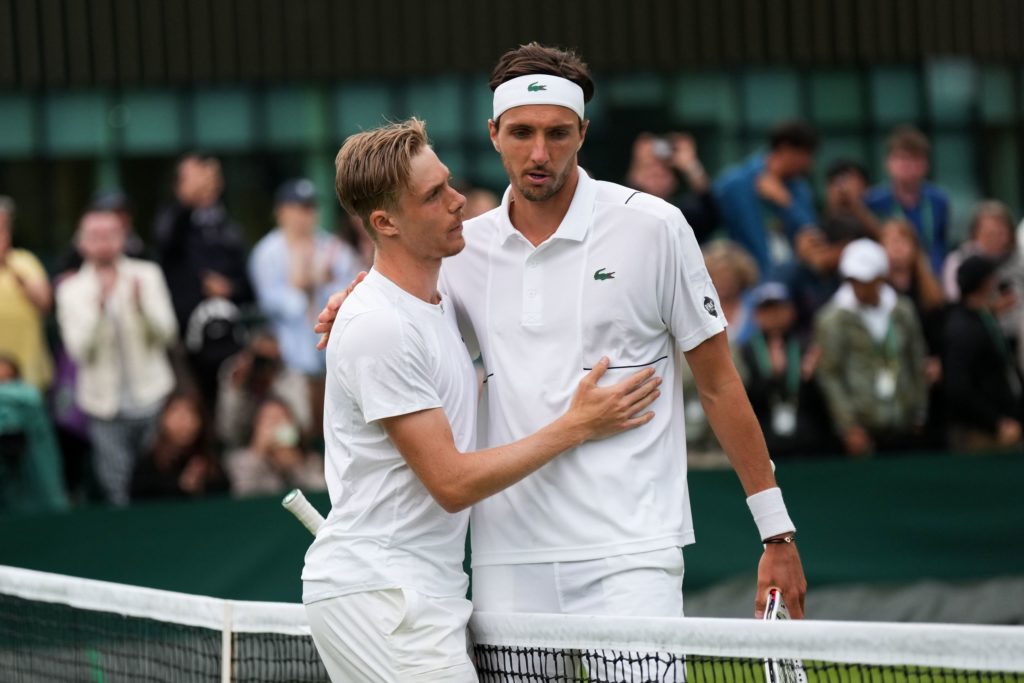
His next match on Thursday will be against No. 56-ranked ranked Brandon Nakashima. It’s a first meeting between No. 16-ranked Shapovalov and the 20-year-old American. “I’ve seen him around, never played him,” Shapovalov said. “(He) looks like a really solid player – doesn’t really have so many weaknesses. Big serve overall. So it’s going to be an interesting match. Definitely just happy to get through today and have a chance to play another match.”
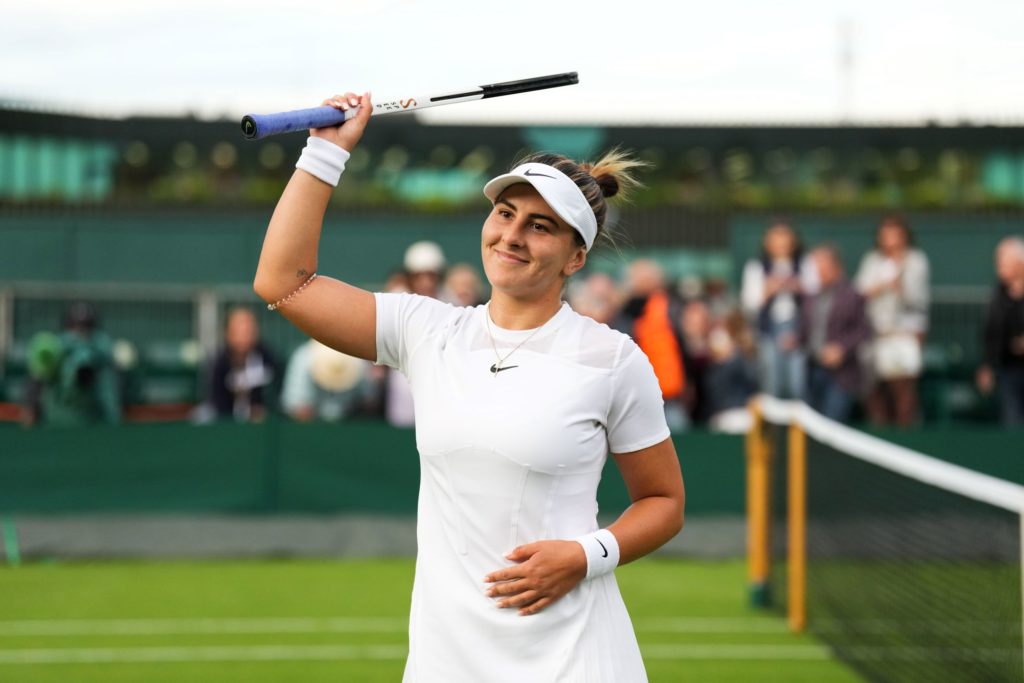
While Auger-Aliassime and Shapovalov were involved in highly-competitive, intense opening encounters, Bianca Andreescu was in complete control from first ball to last in hers – defeating qualifier Emina Bektas 6-1, 6-3 in 55 minutes on Court 14.
Andreescu’s superiority showed in her winners to unforced ratio of 28/9 compared to 11/13 for the 29-year-old American. “I think I was serving well, returning well, I was very focused,” she said. “I didn’t underestimate or overestimate my opponent going into the match. I felt like from A to Z, I think I played really well.”
It’s hard to believe that a player who has won the US Open (2019) and ranked as high as No. 4, had never before won a main-draw match at Wimbledon. “I was actually talking to my trainer (Abdul Sillah) about my first time (2017) at Wimbledon,” Andreescu said. “It was great. Like my first three qualies matches I was killing it at the other site (Roehampton). I go to the main site (first round against Kristina Kucova of Slovakia) and I completely froze. I remember I could not put a forehand in the court. So looking back at that, and finally getting a win here in the main draw means a lot to me. That was like five years ago.”
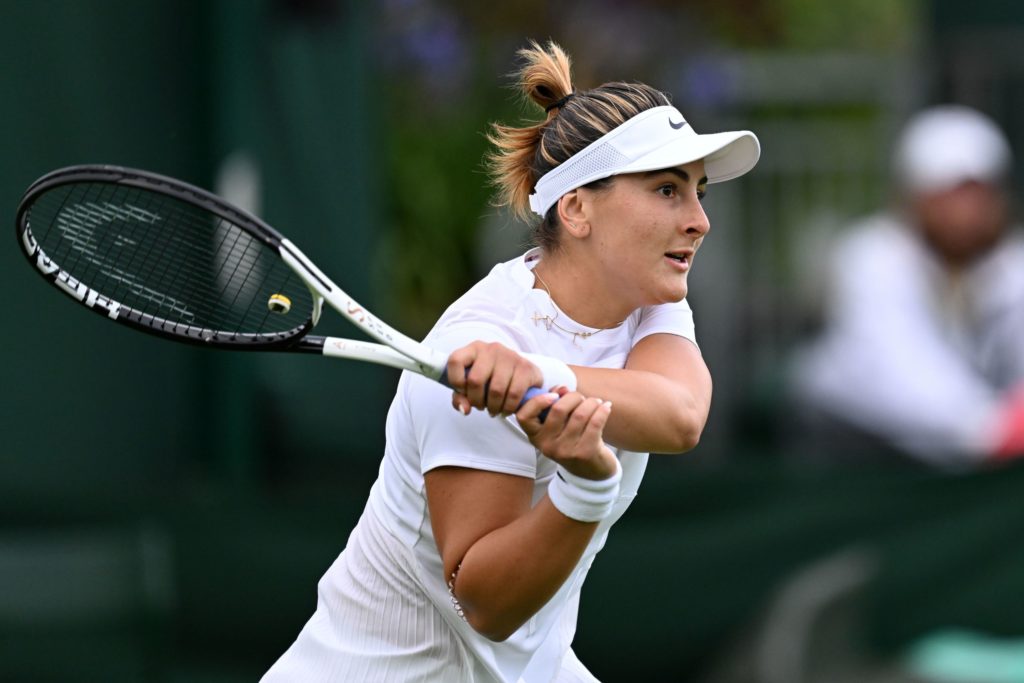
In Thursday’s second round, Andreescu will face the No. 17 seed, No. 23-ranked Elena Rybakina of Kazakhstan. “I know Rybakina serves well,” Andreescu said. “So I got some good feeling on playing an opponent (Bektas) with a good serve. I think I’m going to expect a bit of a tougher match just, you know, rally-wise and maybe speed-wise. I’ve practiced with her a couple of times, so I kind of know how she hits (but) not on grass. I was hitting with her on hard. But I know she fights really hard – so I’ve got to fight harder.”
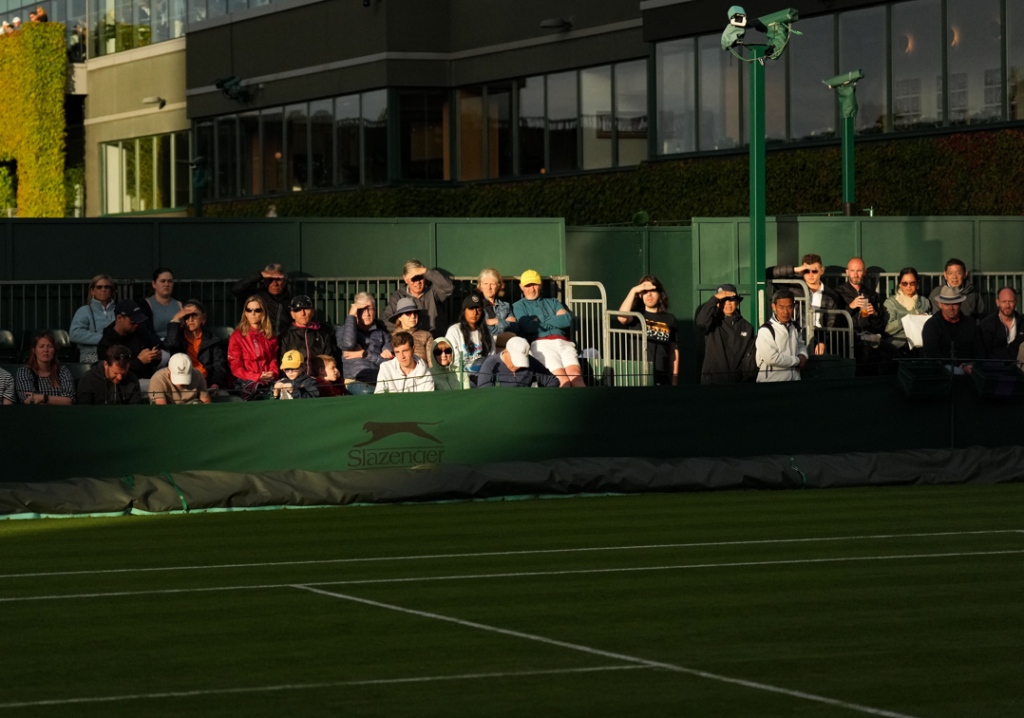
Feature Photo: Martin Sidorjak
